-
Featured
-
Type
-
Country
-
Tomorrow's Wine
We have the privilege of working with and featuring some of the most dedicated craftspeople in the world.
Tomorrow's Wine believes in purposeful wine making that pays close attention to the sustainable farming, land management and production. We work with producers who live this every day.
Here are just a few of the producers that we love...
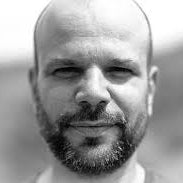
Agricola Cirelli is an organic farm surrounded by 23 hectares of land. All of its production is designed to respect the natural cycles of the olive trees, vineyards, horticultural crops and the animal breeding. Crop rotation, natural fertilization, and free range animal grazing are Agricola Cirelli’s “methods” of production. This harmonious environment creates olive oil, wine, vegetables, fruit and meats of supreme quality.
The farm grows its food and wine in total respect of organic agriculture. Nature sets the rules and it dictates the rhythm of every activity. The animals’ interaction with the land offer natural grazing and fertilization of the vines, which means there is no need to use harmful chemical substances.
Francesco purchased the land in 2003 right after his graduation from university and is now helped out by his fiancée, Michela. His favorite wine is his amphora-fermented wine. These are truly artisanal vessels as there is an obligation to only interact manually with the juice, using nothing other than one's body. If the vessel needs cleaning, someone has to go inside it with a swimsuit in order to clean it. This makes for a more personal process and requires more effort, but the results are well worthwhile.
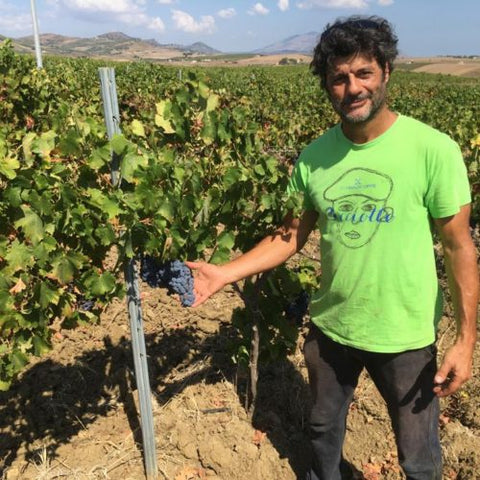
Alessandro Viola is a very small producer located in the northwest corner of Sicily, south of Palermo.
Alessandro’s father was a vine grower, although he bottled very little of the wine he made. Alessandro was fascinated in grape growing from an early age and after a few vintages of self-teaching he decided to get a formal education and study oenology. During his university studies he steered away from the mechanical side of winemaking he was being taught, instead focusng on the science. He strongly believed that as long as the grapes, soil and winemaking were all working together, nothing needed to be added or taken away from the wine. After his university degree he worked in the north of Italy and then for a larger winemaker on Mt Etna, however he had never forgotten the wines he had made before, made by hand without anything added.
Eventually he started making wine for himself, initially with a friend, before branching out to make wines under his own name. Today, he cultivates 7 hectares of organically-farmed vines worked strictly by hand. The vineyards are located in 2 areas, the first in Pietra Rinosa close to Alcamo in the north-western tip of Sicily, where the soil is made of clay and the vineyards sit at 200m above sea level, taking a large influence from the ocean. The second asea is in Fastuchera, where the vineyards are higher, at 400 meters. The soil is calcareous, producing finer, more mineral-driven wines.
Alessandro is strictly committed to growing and championing local varieties, including Catarratto, Grillo, Nero D’avola and Nerello Mascalesse. His style is unique, and his commitment to organic and biodynamic practices with no additions is central to his winemaking philosophy.
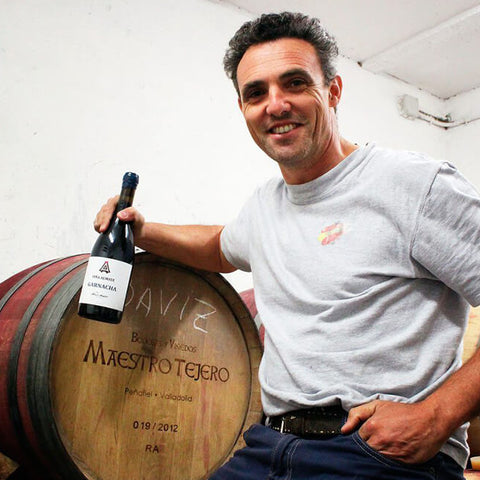
Alfredo Maestro has emerged as one of the most dynamic young winemakers in the whole of Spain. Working far outside the confines of his vineyards’ D.O. legislation, Maestro’s wines have already reached eye-catching levels of maturity and complexity to add to their striking originality. They are
deliciously supple and refreshingly pure-fruited wines, without any use of new oak.
Working in the heart of one of Spain’s most conservative wine regions – his first vineyard was planted at Almate on the Rio Duraton near his home town of Peñafiel (Ribera del Duero) – it didn’t take long for this self-trained grower/winemaker to stray from tradition. Maestro’s many improvements include conversion to organic farming and eliminating any chemicals in the vineyard and additions in the cellar. By 2003, when the term ‘natural wine’ was still a new concept, all of Maestro’s wines were fermented off their native yeasts and bottled without filtration and in most cases without any added sulfur.
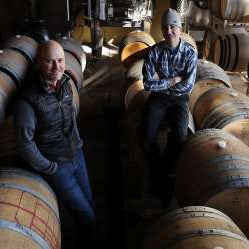
Arnot-Roberts was founded in Healdsburg in 2001 by childhood friends Duncan Arnot Meyers and Nathan Lee Roberts. Beginning with one barrel of wine made in their basement, the winery started small and grew slowly as Duncan and Nathan sourced grapes from some of the most remarkable vineyards in California. They grew up together in the Napa Valley and from an early age were immersed in the rhythm of agrarian life, surrounded by the vineyards and winemaking of the early 1980’s. Both of their families, while not directly involved in winemaking, were deeply rooted in the community as chefs, coopers, teachers and attorneys in what was then a small, up-and-coming wine region. After college, the duo followed their passion into the wine industry with Nathan joining his father as a cooper of oak wine barrels and Duncan pursuing winemaking in several renowned wineries in Napa and Sonoma counties.
The focus of Arnot-Roberts is to produce distinctive, site-driven wines that highlight the nature of the unique terroirs in which the grapes are grown. The journey to this end has led Duncan and Nathan to seek out vineyards throughout Northern California and now includes sites in Napa Valley, Sonoma Coast, Santa Cruz Mountains, Santa Rita Hills, Clearlake and Sierra Foothills. Single-vineyard, small-production wines are the core of their production as well as a few special appellation bottlings. Some of the vineyards are old and dry-farmed, some are newer plantings but all are farmed and cared for by passionate and conscientious growers, which is paramount to the fundamental goal of Arnot-Roberts: producing the most honest and expressive wines possible.
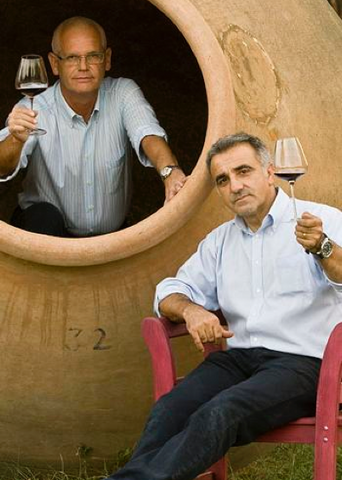
Founded by Giambattista Cilia, Cirino Strano and Giusto Occhipinti, Azienda Agricola COS (the initials of their last names form the winery’s name) has been one of Italy’s most forward-thinking wineries since its inception in 1980. The owners have helped to launch a renaissance in Sicilian fine wine, particularly in elevating the standing of the island’s only DOCG wine, Cerasuolo di Vittoria.
The winery itself dates back to the 1880’s during a period in which there was huge demand for Sicilian wines. Phylloxera had already devastated many of the world’s top wine growing regions but it had not yet reached the island. Sicily has a long history of winemaking, dating back to the 8th century BC when the Greeks first planted grapes in the eastern part of the Island. It is only more recently though that true top quality wines and winemaking have arrived there. It was through the hard work and dedication of producers such as COS who showed the potential of Sicily’s terroir and drew attention to the island, especially its ability to produce complex, pure and fresh wines, despite its location at the very southern tip of Italy.
COS practices biodynamic farming and was certified organic in 2007. The owners use concrete tanks or clay amphorae--the oldest vessel for aging wine--for all of their wines. In many cases, the juice remains in contact with the skins for extended periods. Giusto feels these extended macerations help the wine obtain natural preservatives which in turn allows them do the aging and élévage with little or no added sulfur until the bottling (and then there is only a small addition). The wines are fresh, vibrant and beguiling, thanks in part to the soils in the Vittoria region which are blessed with limestone substrates under 1-2 feet of red clay.
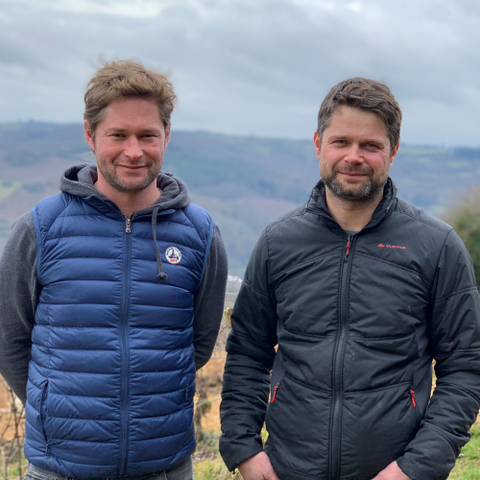
From their domaine in Dezizes-les-Maranges, brothers Marc and Alexandre Bachelet, oversee an enviable catalogue of top Côte de Beaune vineyards: St. Aubin En Remilly, the top sites in Maranges, Puligny 1er Cru Folatières, Puligny 1er Cru Referts, Batard Montrachet, Chassagne Montrachet, and some of the best parcels in Santenay. Since their first vintage in 2005, they have refined their approach to farming and winemaking to the point where they are now firmly established as two of Burgundy’s finest talents.
The whites go through a long press before being fermented with indigenous yeasts in larger 350L barrels and are aged for 12 months in barrel and an additional 6 months in stainless steel tank before release. The comparisons to some of Burgundy’s elites make complete sense as the resulting wines are breathtakingly layered, racy, and achingly long. The reds are of equal quality with an aromatic lift, grain and texture that makes them among the most compelling Pinot Noirs made in the Côte-d’Or today.
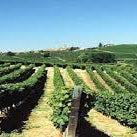
Luca Bevilacqua is part of that new generation of Abruzzese winemakers who have decided to deviate from making wines that are always the same, and to take roads that lead them to produce natural and genuine wines as it was done generations ago. Luca is trained as a sommelier, and after years spent recommending and opening bottles, he decided to make his own wine. Thus the LAB project was born, from the initials of its sons Lorenzo Amerigo and Leonardo Andrea Bevilacqua.
His vineyards, inherited from his father, are located in Atessa, a municipality located in the lower valley of the Sangro river, in the province of Chieti. Vineyards are mainly planted to Montepulciano, Passerina and Trebbiano, which have never seen a gram of chemicals used in farming. The grape harvest and vinification, Luca employs spontaneous fermentations, carbonic macerations and refinements of the wines in steel or fiberglass tanks. His wines are fresh, easy and very drinkable.
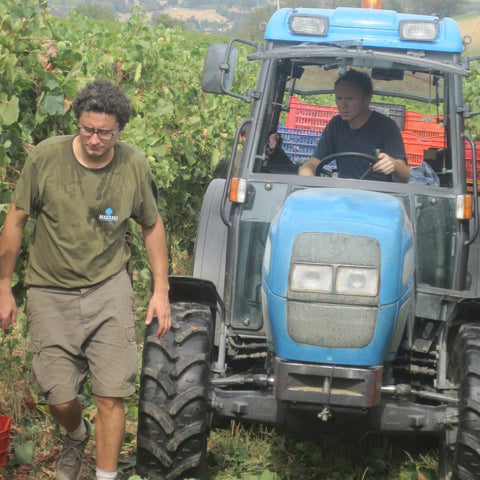
Alberto Masini and his brother, Giovanni, make wine with their father, Vittorio, on what was once only a family walnut farm, Ca’ De Noci. Vittorio planted the first vines in the nineties in the rocky, limestone soil that is characteristic of that part of Emilia Romagna. From the beginning, the main idea was to bring back old, native varieties that had been lost in the rush to make sparkling, industrial Lambrusco wines using the Charmant Method (or second fermentation in covered stainless steel vats).
The Masinis planted Spergola (a very acidic white variety), Grasparossa Lambrusco (a tannic red), Lambrusco di Montericco (an acidic Lambrusco), Malbo Gentile (a sweeter red) and Sgavetta (a native red often mixed into Lambrusco wine) and used organic/natural methods from the start. They use no sulfites, no filtering and no additives in the cellar.
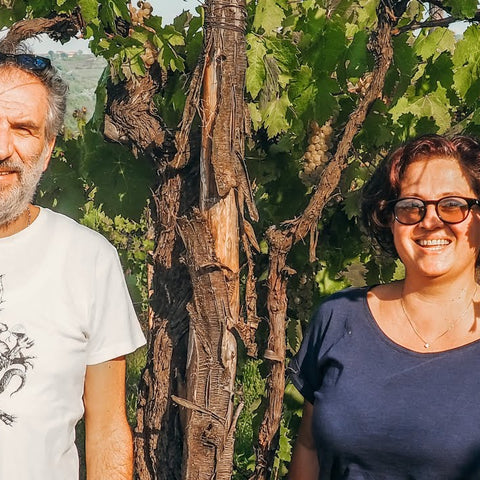
Antonio and Daniela De Gruttola seek out old vineyards in Irpinia, high in the hills of Campania. They champion and preserve the region’s native varietals, old vines and age-old methods of tending them.
The vines are set at altitude and are planted over the region’s vibrant volcanic soils. Grapes are grown organically, vineyard work is done by hand, and a combination of great farming and low yields results in healthy fruit that is full of character. In the cellar, Antonio takes a no-nonsense approach, with the intention of letting this terroir express itself in full. The grapes ferment naturally without temperature control and fermentation can continue for months.
Wines are aged in a combination of terracotta amphorae and large casks made from local woods, and bottled unfiltered, with no additions at all, including sulfur. The resulting wines are singular, vivid expressions of grape and place.
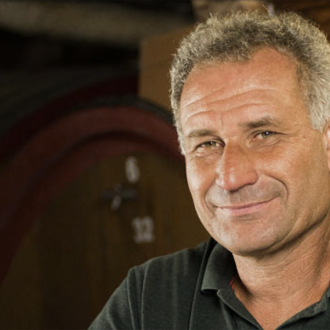
Considered one of the best producers in Fleurie, Clos de la Roilette, located in the village of Fleurie, covers 9 hectares of one of the best slopes in all of the Beaujolais Crus. The clos has an eastern exposure, borders the Moulin-à-Vent appellation, and produces wines that are beautiful when young and have the capacity to age for more than 10 years.
In the 1920’s, when the Fleurie appellation was first created, the former landowner was infuriated by losing the Moulin-à-Vent appellation under which the clos had previously been classified. He created a label using a photograph of his racehorse Roilette and used the name Clos de la Roilette, without mentioning Fleurie. By the mid-1960s, the owner’s heirs had lost interest in the clos, and a large portion of the land had gone wild and untended. In 1967, Fernand Coudert bought this poorly maintained estate and replanted the vineyards. His son Alain joined him in 1984, and has been the winemaker since.
The Couderts say their particular terroir (mainly clay and manganese) and the age of their vines (30-80 years old) account for the richness of their wine. It has a deep color with a hint of purple, a restrained nose of crème de cassis, a rich, full mouth with flavors of cassis and black cherries tinged with a nutty character, and finishes with refreshing acidity. These are wines that age gracefully and often take on the aromatic character of a Pinot Noir.
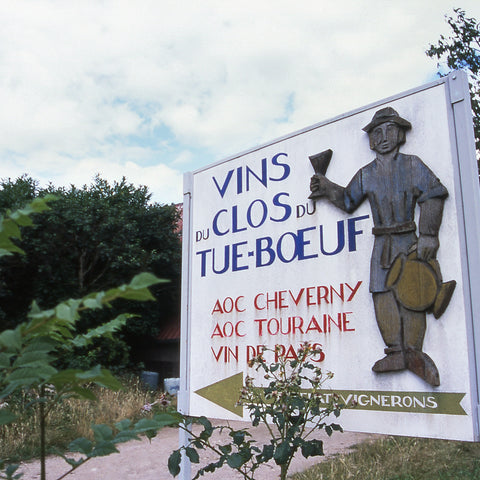
The Clos du Tue-Boeuf in Les Montils (AOC Cheverny) is one of the most important natural wine estates in the Loire Valley. Winemaking at the Clos dates back to the middle ages - the wines were enjoyed by King Francois 1er in the 16th century. The Puzelat family has been present in Les Montils since the 15th century - it was Jean and Solange Puzelat who took over the estate in 1947, and transformed the polyculture farm principally into vineyards. Their sons Jean-Marie and Thierry grew up in the vines, and after working individually at estates in France and abroad, they each returned to take over the family domaine, first Jean-Marie in 1989, joined by Thierry in 1994.
Quickly becoming part of the growing natural wine scene in France, the Puzelat brothers stopped using all additives in their vinifications in 1994 and the vineyards became certified organic in 1996. Fermentations are spontaneous, and most of the wines are unfiltered.
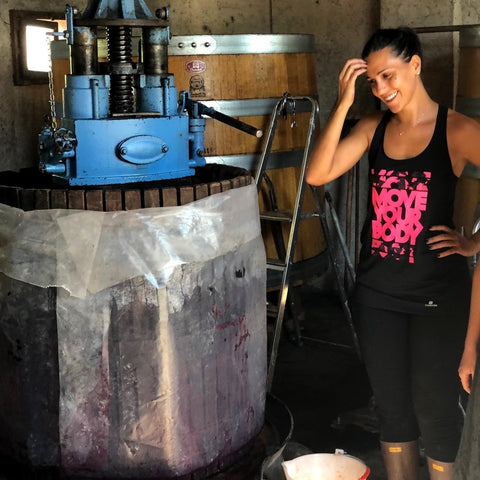
The Mattioli family has been in the tiny hamlet the Romans once called Collecapretta (hill of the goats) since the 1100's. For generations, they have been cultivating the rugged hillsides of southern Umbria. Located just outside of Spoleto, in a tiny borgo called Terzo la Pieve, today's farm is a scant 8 hectares in total; 2 planted to a mixture of local olives trees, 2 planted to farro and other ancient grains, and 4 planted to indigenous old vines. Vittorio Mattioli, his wife Anna and their daughter Annalisa live together with 3 generations of their family inside the tiny village overlooking the valley below with the high Apennine Mountains and Gran Sasso looming in the background. The elevation is some 500+ meters and the soils are a mixture of calcium and iron rich clay with outcroppings of tufo and travertine limestone.
Though the total production of Collecapretta is only about 8000 bottles in a good year, the family chooses to vinify many different cuvees in hopes of expressing the vineyard and grape varieties at their best.
All the wines are made in much the same fashion: natural fermentation takes place in open-top cement containers without temperature control or sulfur additions. The wines then age for various amounts of time in glass-lined cement vats or resin tanks before bottling in synchrony with the waning lunar cycle. There is no sulfur used at any point in the winemaking process. All farming in the vineyards is completely natural, only composts made from their own animals are used to aid vine health.
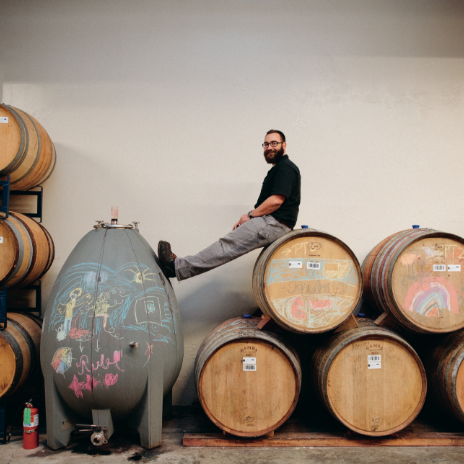
Michael Cruse was born and raised in Northern California and came to the wine business through his love of science. His moment of clarity came after attending a lecture at Cal Berkeley by Terry Leighton of Kalin Cellars. For the first time then, Michael was able to envision a path where his deep knowledge and appreciation for science could take him into the world of wine.
Michael took several positions in order to learn the basics, including stints in the cellars of Sutter Home, and Merryvale in Carneros where he would work his way up to becoming the assistant winemaker. After several years of working for others, Michael felt the desire to strike out on his own and make wines that reflected his vision and admiration for California. Along with a few partners, Michael set up shop in an industrial warehouse in Petaluma, where he built a custom crush facility and launched his first sparkling wine project, Ultramarine, in 2008.
In 2013, Michael launched Cruse Wine Co. with the goal of creating wines that were fruit-driven, fresh and delicious, but still serious. The roots of the North Coast run deep with Michael, so he chose to focus on sites within Napa, Sonoma, Mendocino and Contra Costa Counties to create these wines. Uninterested in creating another Pinot Noir or Cabernet, instead he found inspiration in lesser-known varieties such as Valdiguie, Tannant, Carignan and St. Laurent.
The flagship wine of Cruse Wine Co. is the red blend Monkey Jacket (the name inspired by an old, British sailor song). A blend of Validiguie, Carignan, Tannat, St. Laurent and other field blend reds, it offers incredible drinkability with brightness and ample structure, epitomizing the style of Cruse Wine Co. Michael also makes small lots of single vineyard varietal wines from Valdiguie, Tannant, Syrah, Carignan and Chardonnay.
Believing that sparkling wines are the true lens into a vineyard and its place, Michael also wanted to bring a sparkling component to Cruse Wine Co. that didn’t compete with his Ultramarine project. The Cruse Tradition Sparkling wine is made using the same traditional methods as Ultramarine, but sourced from interesting sites that don’t necessarily match the coastal vineyards of Ultramarine. The petillant natural wines are crafted from single vineyard plantings of Valdiguie and St, Laurent, with nothing else added. The wines are disgorged, so they are bright, clean and show great purity.
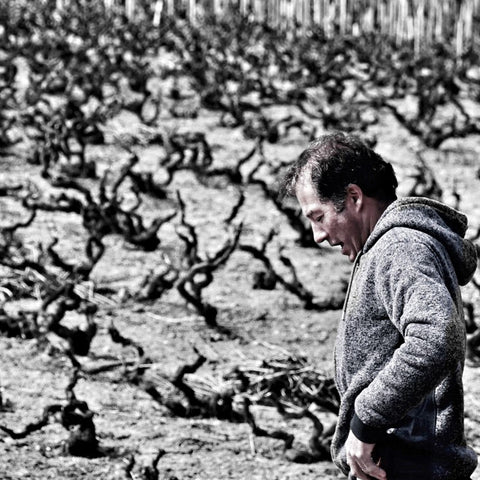
Daniel Bouland is a great producer of old-fashioned Morgon. From less than 7 hectares of old vines in the Douby, Côte de Py, and Delys, lieux of Morgon, plus small parcels in Chiroubles and Cote de Brouilly, he makes wines that can age 20 years, and are comparable to fine Côte de Nuits Burgundies.
The majority of Daniel Bouland’s old vines lie within Corcelette, in the hilly Haut Morgon to the northwest of the appellation. Bouland farms a number of old-vine parcels in this terroir, where the sandy granite soils over weathered schists tend to result in wines of great perfume and finer, rounder tannins than those of the nearby Côte de Py. His Corcellette Morgon vineyard is 60-80 year old vines. De Lys (between Corcellette and Ville Morgon) was planted in 1926. In 2014 he acquired another old vines parcel - Bellevue, on schiste and granite. All his grapes are hand-harvested and vinified with full clusters in order to extract all the organoleptic qualities, and bottled unfiltered.
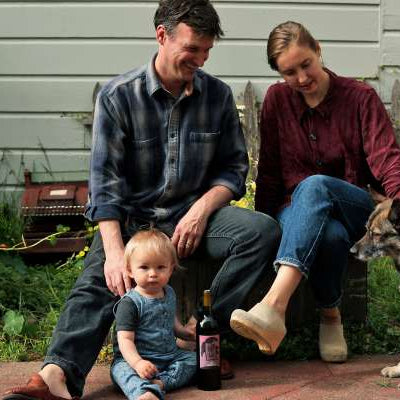
Charlie Miller founded Dewey's wines in 2016 after working harvests around the globe and winemaking stints at A.P. Vin, where the focus was on vineyard-designate pinot noirs from up and down the California coast, and Cruse Wine Company where he helped make some of the most exciting sparkling wines in California.
Charie's wife and business partner Emma Rosenbush is a longtime Californian but forever a New Yorker at heart. After several years in Mexico City where she co-founded Pichón, an American brunch-inspired pop-up restaurant, Emma returned to California and opened Cala Restaurant in San Francisco with friend and mentor Gabriela Cámara. She remains a managing partner there, as she helps to build Dewey's Wines.
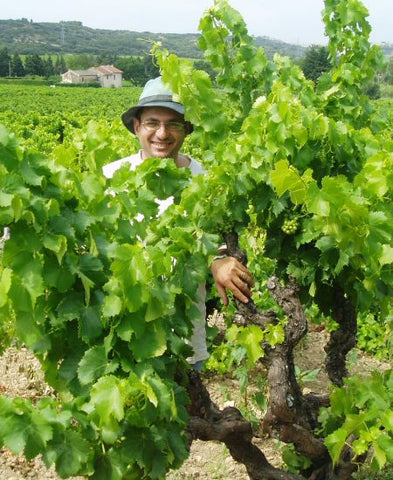
Domaine Charvin was created in 1851 by Guillaume Charvin. For more than a hundred years, the harvest of Domaine Charvin was sold in bulk to negociants in the Southern Rhone Valley. The modern age of Domaine Charvin began in 1990 when the young, energetic Laurent Charvin took over the management of the estate. Laurent was the sixth generation of his family to work at the property, but 1990 was the first vintage for the domaine to produce, bottle and sell their own wine.
The small family estate is located in the north of Châteauneuf-du-Pape. The domaine has vineyard holdings of just 8 hectares in Châteauneuf-du-Pape and 13 hectares in Côtes du Rhône. The average age of the vineyards is over 50 years old, with the oldest being nearly 80 years old. Laurent Charvin describes his vineyard site as being cool for Châteauneuf, as a result of their vines being mostly planted on sandy north facing slopes. Farming is biodynamic and the estate is certified organic.
Charvin produces finely styled, Grenache-based wines showing great depth and finesse (approximately 80% Grenache for each wine with small amounts of Vacaresse and Mourvedre as well as small amounts of Carignan and Bourboulenc for the Côtes du Rhône). Winemaking is traditional, with no de-stemming, and all aging is done in cement tanks. No wood is used for the elevage of either wine. There is no mystery here, simply old vines, very low yields and minimal winemaking intervention. Domaine Charvin's Côtes du Rhône is regularly rated one of the very best from this area--not surprising as the vines for this cuvée directly border the appellation for Châteauneuf-du-Pape in the northern sector where they are located.
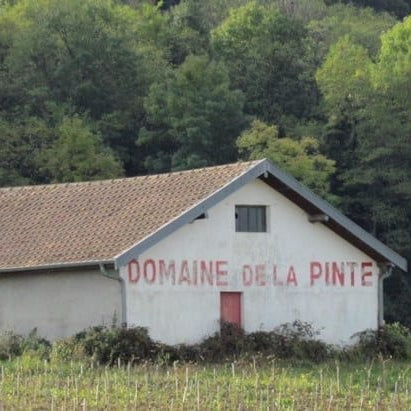
Domaine de La Pinte was first planted in the 19th century, however, after the ravages of phylloxera, the vineyards were not replanted until the early 1950s by Roger Martin, a geologist and native of Arbois. Roger, a wine enthusiast and geologist, selected Domaine de La Pinte because it is situated on a band of blue marl which runs through Arbois to Château Chalon at an altitude of 400 metres. Twenty hectares were first planted, more than half with Savagnin, and the first harvest was in 1959.
Today, Roger's son Pierre runs the property, and has earned a reputation as one of the driving forces behind mindful winemaking in his native Jura. With 20 years of organic farming and 10 years of biodynamic practices under his belt, he leads a team that operate purely on a philosophy of minimal intervention.
His belief in biodynamics enables Pierre to coax the very best out of the region. The range is an excellent example of what Arbois has to offer; elegant and complex, always with the backbone of acidity for which Jura wines are known.
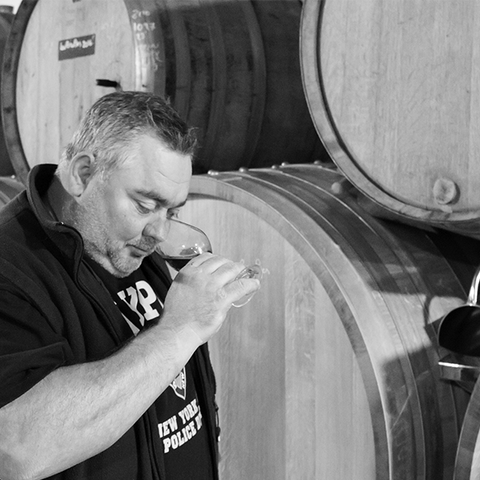
The man behind Domaine de Saint Pierre is Fabrice Dodane, who studied enology in Beaune before working several years at the cooperative in Pupillin. He started working at Domaine de Saint Pierre in 1989 as a manager and took full control in 2011. The estate covers approximately 6 hectares in the Arbois and Côtes du Jura AOCs with the vines planted in limestone and marl soils. Saint Pierre achieved organic certification in 2012, having begun conversion in 2002.
All wines are fermented with native yeasts either in tank or neutral barriques; vinifications for the reds are done without the addition of sulfur. The whites are made using both the traditional 'sous voile' method as well as topped-up, or ouillé style. These are wines of great purity, displaying beautifully balanced expressions of their terroir.
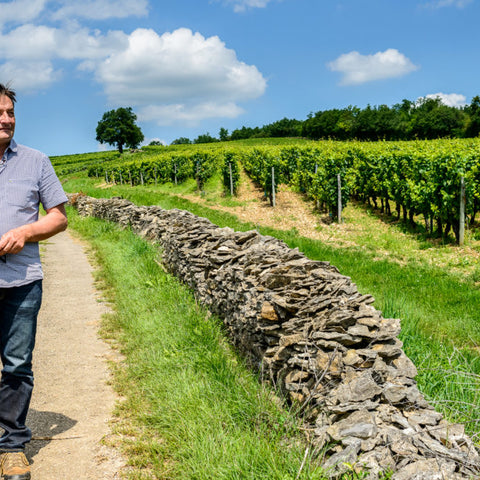
Domaine des Comte Lafon has the deepest and coldest cellars in Burgundy and they are known for producing some of the greatest dry white wines of Burgundy. Dominique Lafon is the leading producer in Meursault, producing wines of astonishing depth and complexity, yet supremely balanced as well.
The domaine dates back to the building of the house and cellar at Clos de la Barre by the Boch family in 1869. However the real creator of the estate was Comte Jules Lafon who married Mademoiselle Marie Boch on St Vincent’s day 1894, and was shrewd enough to purchase exceptionally well sited plots in the best vineyards of Meursault and Volnay, as well as a treasured piece of Le Montrachet acquired in 1919.
Dominique Lafon has been in charge since 1985, taking over a domaine which already had a reputation for outstanding, if irregular whites, and potentially good reds. When Lafon took over the domaine, most of his vineyards were leased out on a share-cropping basis. It was only towards the end of the 80s that he managed to reclaim all the vineyards and thus have full responsibility for them.The white wines are now consistently among the best in Burgundy while since 1989 the reds have reached the top division. Not only are the Lafons' holdings in the best vineyards of Meursault and Volnay, but they are mostly very well situated within the vineyards. The domaine is now cultivated according to biodynamic principles with no use of herbicides or chemical sprays. All the wines are barrel-fermented, using new oak for the 1er Crus upwards. There is only one racking after the malolactic and the wines are bottled nearly two years after the vintage, one of the latest bottlings in Burgundy. This is the very pinnacle of White Burgundy with superlative fruit, power, complexity and total harmony being the wines' hallmarks. The reds (incl. those from Volnay, Monthélie) are first class as well.
In September 1999 the Lafons bought a domaine in the Maconnais at Milly Lamartine, sold under the label of Les Héritiers du Comte Lafon. Further vineyards have been bought subsequently, and from 2009 there is a contract in place to farm the vineyards of the Chateau de Viré. Dominique has also established a small label of his own, the wines being made in Beaune.
The white wines are whole bunch pressed then settled in tank at 12°C for 24 hours. No new oak is used for the village wines, up to 70% for Charmes and Perrières, less for Genevrières, and 100% for Le Montrachet, though these are subsequently racked into older wood. The wines spend a second winter in wood.
The red grapes are 100% destemmed and put in stainless steel tank with a cooling and heating system. Temperature reduced to 14° for a three to five day pre-fermentation maceration. The vats are typically punched down twice a day during fermentation. Post-fermentation maceration depends on the tannins, while sometimes the juice is pressed and run off into barrel to finish fermenting there. 30% new oak is used. Maturation takes place over 18 months with two rackings before bottling without fining or filtration if possible.
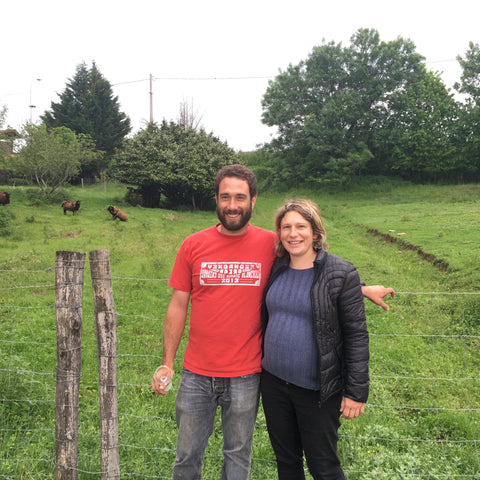
Natives of the Jura, both Pauline and Géraud’s families owned tiny plots (used to make wine for personal consumption) and spending time in the vines in their childhood was enough to give them the wine bug. They met while studying winemaking in Dijon and created Domaine des Marnes Blanches when they returned to the Jura in 2006.
They farmed organically from the beginning and have added parcels along the way to reach a total of 12 hectares today, spread across three towns in the Sud-Revermont (south of the Côtes-du-Jura AC). Cesancey, their first acquisition, is home to the white marl after which the domaine is named, while Gevingey, Vincelles and Ste-Agnès have more varied soil types, the majority being red marl and gryphées (limestone rich in fossils).
A recently built new winery off the main road in Ste-Agnès gives them plenty of space and allows them to vinify and age every parcel separately. Wild yeast fermentation is standard, wines are fermented in stainless steel and then aged in minimum 5 years in barrels. Sulfur is used sparingly for the whites or not at all for the reds.Their range concentrates on topped-up Chardonnay and Savagnin, but they also produce a stunning Vin Jaune and tiny quantities of Crémants, Pinot Noir, Trousseau and Poulsard, usually vinified through semi-carbonic fermentation with whole bunches.
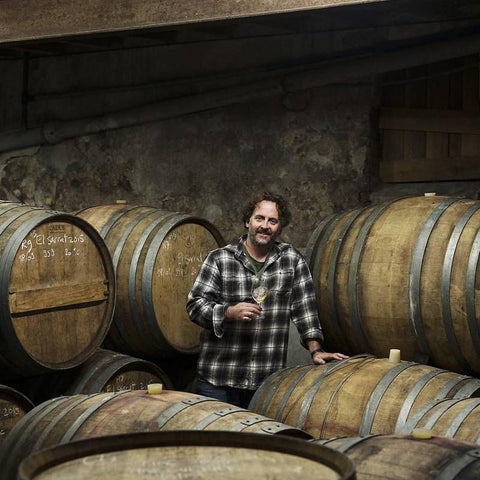
New Zealander Tom Lubbe was making wine in South Africa when he got the opportunity to do a 3-month internship at Domaine Gauby in the south of France. That internship turned into a 3-year relationship during which time he met Gérard Gauby's daughter Nathalie, to whom he is now happily married.
After learning about Catalan winemaking from Gérard Gauby, the couple struck out on their own in 2002, purchasing some ancient Carignan vines (100+ years old) in the remote hillside village of Vivier at 500m - 600m altitude- saving them from extinction. Thus Domaine Matassa was born. The couple produced their first vintage in their living room before moving into Domaine Gauby's old cellars in 2004.
Domaine Matassa works with old vines of traditional Catalan varieties: Carignan, Grenache, Macabeu, Grenache Gris, Muscat d'Alexandrie and Muscat de Petits-Grains. Most are massal selection. These old vines are incredibly low-yielding and result in terroir-driven wines of intense concentration and focus - the likes of which rarely hail from the south of France.
Indigenous grapes come from old vines, and vineyards are worked naturally, by hand. Matassa uses native yeasts and no additives of any kind, except for minimal sulfur at bottling. Wines are unfined.
These are beautifully balanced subtle old-vine wines driven by acidity and crunchy fruit with outstanding concentration and focus.
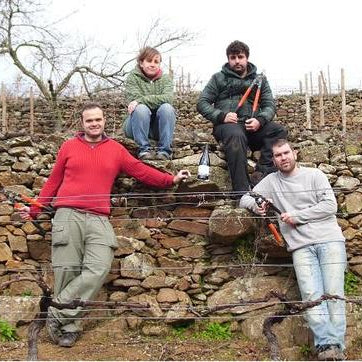
Envínate (which translates as "wine yourself") is the brainchild of 4 friends, winemakers Roberto Santana, Alfonso Torrente, Laura Ramos, and José Martínez. This gang of 4 formed back in 2005 while studying enology at the University of Miguel Hernandez in Alicante. Upon graduation, they formed a winemaking consultancy, which evolved into Envínate, a project that focuses on exploring distinctive parcels mainly in the Atlantic-inflected regions of Ribeira Sacra and the Canary Islands.
Their collective aim is to make profoundly pure and authentic wines that express the terruño of each parcel in a clear and concise manner. To this end, no chemicals are used in any of the Envínate vineyards, all parcels are picked by hand, the grapes are foot-trodden, and the wines are fermented exclusively with wild yeasts, with a varying proportion of whole grape clusters included. For aging, the wines are raised in old barrels and concrete, and sulfur is only added at bottling, if needed. The results are some of the most exciting and honest wines being produced in Spain today.
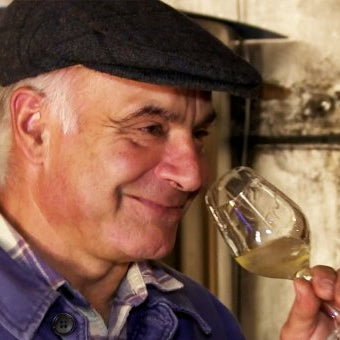
Mark Angéli was a chemistry student turned stonemason who embraced viticulture as a form of environmental protection. He bought the Ferme de la Sansonnière in 1990, with 7 hectares in Anjou, Coteaux-du-Layon and Bonnezeaux. After years of making sweeter style and celebrated Bonnezeaux wines, he decided to focus on making great dry and semi-dry wines from the plots. This was due to the fact that he wanted to focus on unwired head-trained vines, which is practically unheard of in cooler climates. This allows the gobelet to have more freedom and air, thus leading to purer grapes and less rot, without having to incorporate manipulative techniques during the production process.
Leading the natural wine movement with Nicolas Joly in the Loire Valley, Mark now works with his son Martial, and winemaker Bruno Ciofi, producing precise and complex minimal interventionist wines. Volcanic sulfur from Etna is used to reduce usage by almost half. They make a total of 6 different cuvees, with four being white wines.
La Lune is the benchmark wine made entirely of Chenin Blanc.; a version of La Lune aged in ‘Amphora,’ giving it a texture boost; Les Fouchards, which is their monopole site planted in the 1970s, and aged in barrels for 2 years before release; The top cuvee, Vieilles Vignes des Blanderies, comes from plantings from 1949, also aged in barrels for 2 years. Next up, they also make a semi-dry Rosé from Grolleau Gris, named Rosé d’un Jour. Lastly, the unicorn red wine, Les Gélinettes, made entirely from Grolleau Noir with only 900 bottles or so produced a year.
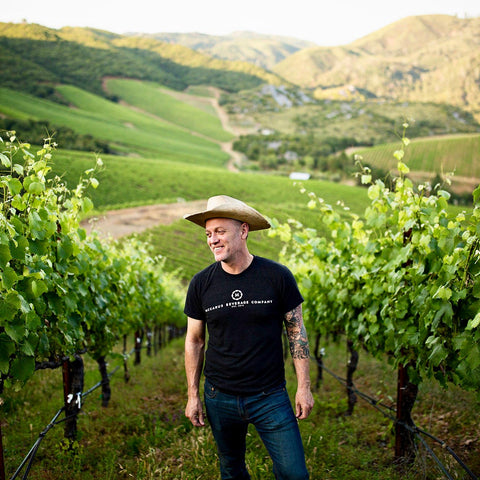
Winemaker Matthew Rorick started Forlorn Hope in 2005 outside of Murphy's, California, in the Sierra Foothills, having inherited from his grandfather a love of wine’s central place at the dinner table between friends and family. His wine have continued to gain the attention of sommeliers and natural wine devotees worldwide.
The Rorick Heritage Vineyard, peaking up to 2000 feet above sea level, got its start in the 1960’s when the ranching land was purchased by Calaveras County wine luminary Barden Stevenot, who put Calaveras viticulture on the map. Rorick purchased the property in 2013 and began organic conversion. Today, the 75-acre vineyard is devoted to an eclectic range of varieties planted or grafted in the limestone soils under a layer of schist.
Forlorn Hope wines are “honest and pure representations of the site and variety” vinified with just as much respect and care as is shown to vineyard that the individual wine reflects. There are no chemical adjustments, additives, commercial yeast, or bacteria; and there is no new oak allowed in the winery. Some wines are given the minimum effective amounts of sulfur, added either post-ferment or pre-bottling, while others are bottled with no sulfur added. The latest addition to Rorick's range is a line of wines under the “Queen of the Sierra” label. They are fresh and vibrant wines that are highly approachable and are made with fruit grown in Rorick’s own Heritage Vineyard.
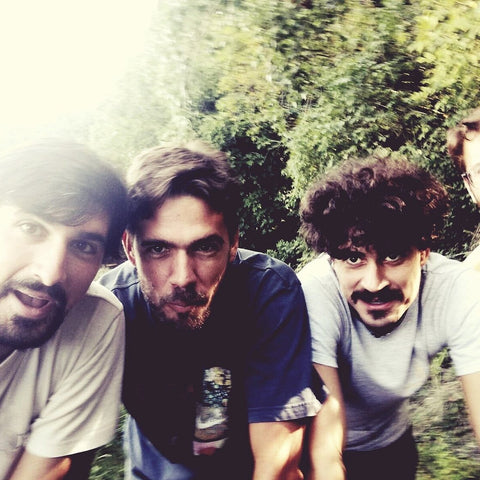
Formiche was created by four friends: Simone, Gigi, Dylan, and a second Simone--three winemakers and an agronomist, who crossed paths and shared experiences in various parts of the world before finding themselves back in Tuscany. The project was born from the two-day reunions they would organize once a month to have dinner and blind-taste various wines. Each of them used to bring 4-5 bottles to fill the weekend with wine, the joy of being together and a lot of laughs. The spark got bigger day by day, and they realized they were all sharing the same energy, the same vision, and the same dream.
In their minds it became clear that they were being led to only one place and only one grape variety: Ansonica, a late-ripening white variety with a alluring golden hue once ripe, planted along the coast of Tuscany and its nearby islands since the 11th century, considered more rustic by modern oenological standards. It has an intriguing history, and at its best clearly expresses the Tuscan coastal “marine” terroir.
Finding the vineyards was anything but simple. Not much Ansonica had been left in the area, and they looked obsessively and exclusively for old vineyards located on very light sandy soil without any tough clay. It took a couple of years to find the small 2-hectare parcel they began with, south of the Maremma coast in a town called Capalbio, just a few kilometers from the sea. The 30+ year old vines enjoy very pleasant sea breezes, which mitigate the hot spikes in temperature and help keep consistently healthy plants year-round. The old rows of Ansonica were quite dilapidated, but with their own hands, pruning shears, and a huge amount of courage, they bought the vineyard back to life.
The vineyard's red, sandy soils with abundant marine deposits are kept healthy with cover-crops and green manure. Only copper, sulfur and herbal teas (common horse tail, nettle and willow) are used, at minimum dosages and only when strictly necessary. They strive for a natural, holistic approach to viticulture.
At harvest, grapes are evaluated and picked plant-by-plant, in order to take bunches only when they are ready. In the cellar, unnecessary interventions are avoided. Fermentations are spontaneous, whole bunches are gently pressed, no clarifications or fining are done, and sulfur is added only as necessary.
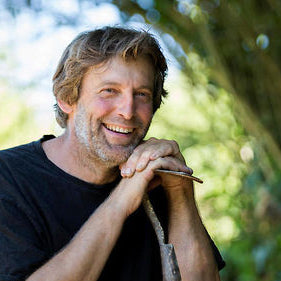
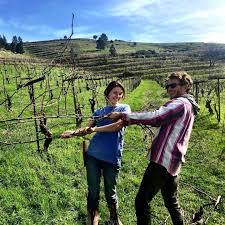
Aaron and Cara Mockrish live, farm, and grow wines in Oregon House, California, nestled in the North Yuba AVA of the Sierra Foothills. Both originally from the east coast, various life turns found them farming vegetables, sheep, and other things in Northern California where they met Gideon and Saron of Clos Saron. They fell in love with winegrowing and the Sarons took them under their wing, helping them produce their first small vintage in 2015 and teaching them how to work in the vineyard and stomp grapes. Shortly after, they were able to secure access to a large portion of the Renaissance Vineyards, where they have been making natural wines since 2016.
Grapes are always whole cluster, foot-stomped, spontaneously fermented with no additions, subtractions or corrections. They use only old french oak and other neutral vessels. They use no sulfur during the life of the wines until bottling day, when they add a minimal amount of sulfur. The only chemical they use in the vineyard is an organic, elemental form of sulfur during the middle of the growing season.
Frenchtown Farms makes wines that are alive, slightly wild in the glass, and full of character.
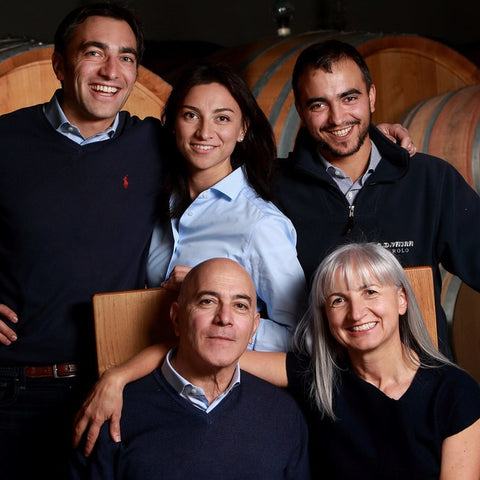
The Vajra family has farmed Bricco delle Viole, the highest cru in Comune di Barolo, since the 1880s. At the young age of fifteen, Aldo Vajra embraced the dream to revive his family legacy. Displaying a vision and commitment belying his young age he took over the estate in 1968, turning a new page. Aldo soon acquired the first organic certification of the region (1971), created private biotype selections (selezioni massali) of Nebbiolo and Dolcetto, pioneered the renaissance of Freisa, a noble yet forgotten local grape (1980) and the cultivation of Rhine Riesling in Piemonte (1985).
Today, the family has 40 hectares under vine. The estate is steeped in tradition. Barolos are macerated for 20 to 30 days depending on the vintage. Wines are typically matured in large neutral Slavonian casks. The holdings in Bricco delle Viole are the prized vineyards of the estate, planted in 1949 by Aldo’s grandfather. It’s a very fresh terroir with open exposure and breezy conditions. Holdings in Barolo commune are: Fossati, Coste de Vergne and La Volta. Recently acquired vineyards in the commune of Sino (just outside Barolo DOCG, next to Serralunga) make a gorgeous Langhe Nebbiolo.
High elevation vineyards are a unique factor to Vajra wines, allowing them to express finesse and remarkable complexity over simple power. Attention to detail and humility toward nature, uncompromised efforts and humanity, these are the ideals of the Vajra family: Aldo and Milena, now joined by their children Giuseppe, Francesca and Isidoro, and by an amazing team of young professionals. G.D. Vajra is an independent winery that is entirely family-owned.
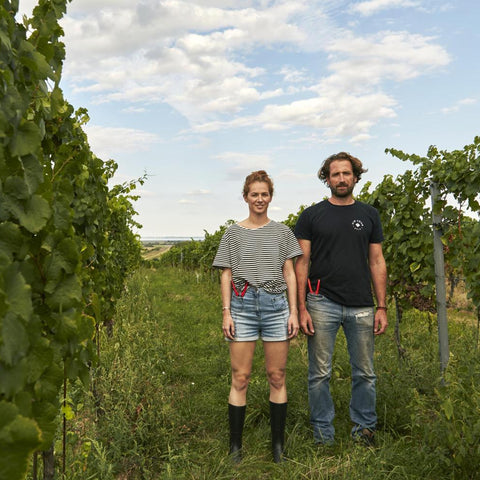
Gut Oggau is a project in the small town of Oggau in Burgenland, Austria, started by Eduard and Stephanie Tscheppe in 2007. Before starting the winery, Eduard made conventional wine with his father in Styria, and Stephanie’s family owned and operated the Michelin starred restaurant Taubenkobel. They painstakingly restored the 17th century winery that had been abandoned for 20 years, including its 200-year-old screw press. The vines’ 20-year period of neglect was fortunate, as this allowed for all pesticide and chemical treatments to be washed away. This let them begin working immediately on vines biodynamically, where they are now fully Demeter certified.
When they began to work with the wines in the cellar, they noticed that each wine seemed so alive with its own personality, that they decided to craft labels centered around the personality inside each bottle. Thus they created a family of wines: each wine is given a name of one family member and the artist Jung von Matt draws a face for each label. The children, Atanasius, Theodora, and Winifred, are wines that are more forthright, light, bold and energetic. The parents, Joschuari, Emmeram, Timotheus, and Josephine, come from vineyards with a little more direct sun exposure and therefore more ripeness producing wines with more body and power. And finally the grandparents, Mechtild and Bertholdi, are from two single vineyards of older vines that produce the most traditional wines from their lineup.
Most of the vineyards are field blended, but they do work with 6 main grape varieties–Blaufrankish, Zweigelt Grüner Veltliner, Welchriesling, Weissburgunder (Pinot Blanc), and Gewurtzraminer.
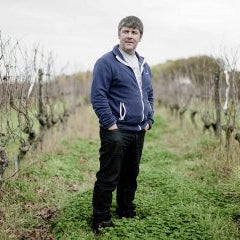
Hervé Villemade has family roots in Cellettes, a small town in the Loire Valley of France, going back multiple generations. Since taking over in 1995, he has grown his estate to include the original 8.5 hectares owned by his parents, an additional 8 hectares that he has purchased over the years, and the difference being comprised of parcels that he rents. At the beginning, the vines were farmed conventionally (as that is they way his parents farmed) using herbicides and fungicides, and the wines were made the same way with lab yeasts and additives.
It wasn’t until a few years later that he tasted wines made by Marcel Lapierre in Beaujolais and Thierry Puzelat at Clos du Tue-Bouef in nearby Les Montils, both of whom he cites as his key influences to start doing things the natural way, that his eyes were opened. Hervé immediately began experimenting with zero-sulfur winemaking, but quickly realized that in order to do this, he would need higher quality fruit. This realization lead him to begin the arduous task of converting the entirely to organic farming starting in 2000 and ultimately shaping the domaine as we know it today.
All of Hervé’s vines fall within the Cheverny and and Cour-Cheverny AOCs and are planted in a mix of clay and sandy soils with silex (flint) stones in many of the parcels and a limestone base. As mentioned, he farms organically (certified) and Herve does most of the vineyard work on his own. In the cellar Hervé works with native yeasts for all fermentations in élevage is done in a range of different vessels: concrete tank, foudre, tronconic vats, neutral barrique, and even amphora. Very little SO2 is used, if any, depending on the cuvée. Hervé makes a wide range of different cuvées, all of which are stunning examples of classic, natural wines of the region.
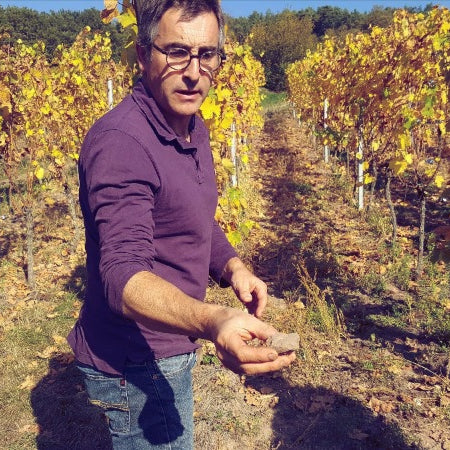
The Rietsch estate has been in the family for seven generations and the land was previously used for tobacco and crops. It was Jean-Pierre’s parents who started cultivating vines in 1970s, and handed on to Jean-Pierre in 1987. Although Jean-Pierre is now retired, he still contributes to daily runnings and is assisted by Pierre-Etienne Grieshaber, however the domaine is still very much driven by a family-led culture. The vineyard is naturally cultivated, with terroir at the heart of the operation and no use of chemicals.
Very little sulfur is used, and only when necessary. Wines are made with a low-pressure pneumatic press to extract gently, with a slow fermentation and indigenous yeasts. This is also one of the few wineries in the area to experiment with skin contact wines.
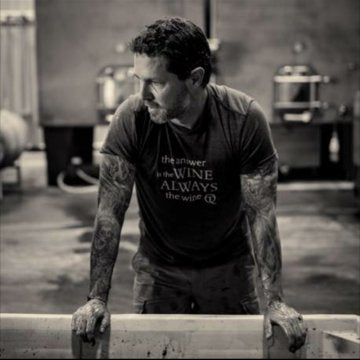
Jolie-Laide is a two-person operation based in a Sebastopol winery where winemaker Scott Schultz and his partner Jenny Schultz make only 500 cases of wine a year under their own label. The name Jolie-Laide translates loosely to “Pretty-Ugly,” a French term of endearment to describe something that is unconventionally beautiful. Scott & Jenny make some of the most unique and highly sought-after natural wines in California, using simple winemaking methods--whole cluster, foot crushed, indigenous yeasts, aged in neutral oak and little to no sulfur added.
Scott’s passion for wine was ignited when moved to Napa from Chicago in 2007. Having had extensive experience in the restaurant business, he switched gears upon his arrival in California to lead the wine program at Thomas Keller’s Bouchon. Working a harvest and as a cellar master are a few of Scott’s many achievements. He now shares a winemaking facility with Wind Gap, Ryme Cellars, and formerly Arnot-Roberts, all of whom share similar philosophies as Jolie-Laide in discovering unconventional beauty.
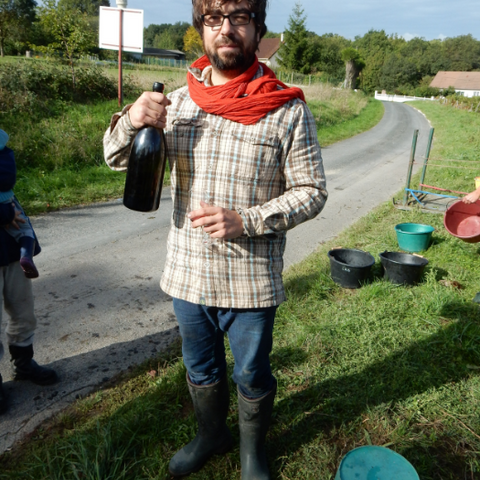
Clos Roche Blanche was one of the most important estates in the Loire Valley and an inspiration to young vignerons who followed their conversion to organic and biodynamic farming and more natural methods of winemaking. The estate was inherited by Catherine Roussel from her grandfather and managed by Catherine and Didier Barouillet until their retirement in 2014.
A succession was uncertain until Julien Pineau, who was already working at the estate, and Laurent Saillard, who was then working with Noella Morantin, were each able to purchase half the vines and begin making wine in 2015. Julien had become very interested in wine while doing harvest with Bertrand Jousset in Montlouis, then received a viticulture degree in Amboise and worked with Jean-Christophe Comor in Provence. Returning to the Loire, Julien worked a year at Clos Roche Blanche under Didier before purchasing his half of the estate - and though Catherine and Didier had retired, they both worked for Julien during the 2015 harvest!
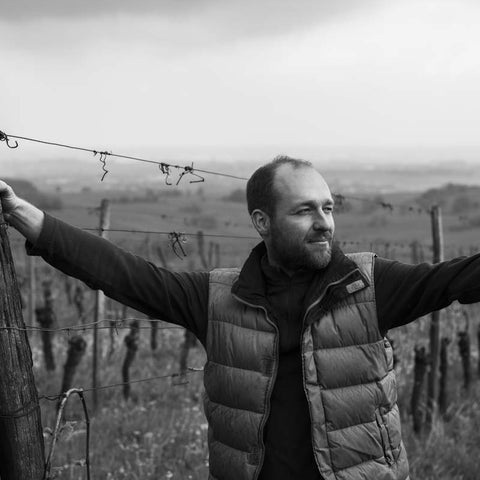
In 1997, when the young couple Sophie Kumpf and Philippe Meyer started their new winery, they simply merged their Alsatian family estates. They began with a lot of passion, but as life sometimes happens, Philippe left for new adventures and wasn’t interested in making wine anymore. Luckily Sophie found Julien Albertus in 2010 to take over the winemaking, so she could focus on the business side of things.
Since 2012, Julien Albertus of Kumpf et Meyer has been working biodynamically in his Alsace vineyards. He keeps busy with 16 hectares of organic/biodynamic vines spread across 70 vineyards, some of which have been used for growing grapes since the 17th century. Always searching for new ways to express the full potential of his varietals as naturally as possible, Albertus makes his wine in a local cave on the outskirts of Rosheim—its cool climate perfect for production, with great energy and enthusiasm for each of his terroirs.
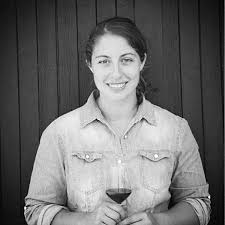
La Villana owner Joy Kull was born and raised in Connecticut and developed an interest in wine while working with her father at his wine shop. After spending some time taking classes in school, working as a sommelier on the side, and exploring options in the U.S., she realized that she wanted to try actually farming and making wine. She set her sights on Italy. Having been introduced to the Le Coste wines before her trip, Joy reached out to the winery, and she was given a job as an intern. While working at Le Coste in Lazio, Joy developed a love for the region, in particular the area around Lake Bolsena, a tranquil lake surrounded with sandy volcanic soils about half way between Rome and Florence and 10km from Tuscany.
La Villana was born in 2016. With the help of her husband, a local shepherd (thus the colorful sheep on the labels), Joy was able to find small vineyard parcels and take them over from old villagers who didn't want to see their land go unused. Focusing on only local grape varieties, she also planted vines overlooking the lake, including Procanico, Malvasia, Roscetto, and Petino grapes for white wines, along with some local red varieties. She now has about 2.5 hectares spread across multiple small parcels, and 1.5 hectares that she planted on her land (about 10 acres in total).
For anyone familiar with the wines from Le Coste, Joy's wines encapsulate a similar spirit. She is committed to non-interventionist farming, indigenous varieties, indigenous yeast, and no-sulfur winemaking. Joy's wines are simple, enticing and delicious, and meant for early or immediate consumption.
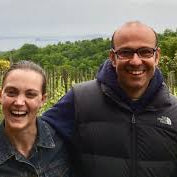
This is a fascinating project started in 2004 by Gian Marco Antonuzi and Clementine Bouveron. The couple are winegrowers in the Lazio region, about halfway between Pisa and Rome, who farm 6.5 hectares of vines near the village of Gradoli, overlooking Lago di Bolsena, and work biodynamically. The soils are volcanic, rich in iron and minerals.
The primary red grape here is Greghetto, which is the local version of Sangiovese. White varieties include Procanico and Malvasia. Half their vines are sourced, half are owned. Winemaking is natural, fermentation occurs spontaneously due to indigenous yeasts, and wines are made with no additions, including sulfur. Production is very small.
These are some of the most natural wines of Italy. Extremely pure and expressive, they are a joy to drink.
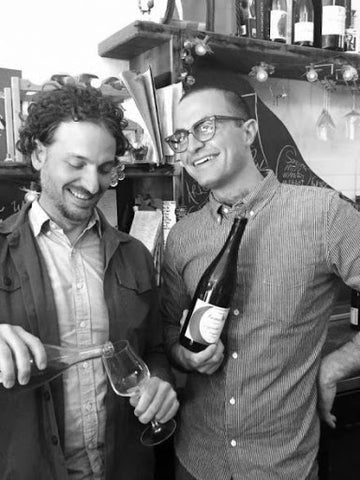
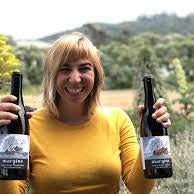
Margins Wine is a small winemaking project of Megan Bell, a winemaker living and working in the Santa Cruz Mountains. Prior to settling on the central coast of California, Megan received her BS in Viticulture and Enology from UC Davis and apprenticed in wineries and vineyards in Napa, the Livermore Valley, the Willamette Valley, Central Otago (NZ), and the Loire Valley (France).
Margins Wine produces fresh and vibrant low-intervention wines using grapes from underrepresented regions, vineyards, and varietals. The winery is part of the growing movement in California to make wines from organically farmed vineyards using little to no additives during the winemaking process, thereby showcasing the vineyards the grapes came from.
Much like people living on the ‘margins of society,’ vineyards can be outcasts too. Most consumers of wine are only familiar with a handful of grapegrowing regions and types of wine. Margins draws attention to vineyards and varietals throughout northern and central California that find themselves on the margins without the recognition they deserve.
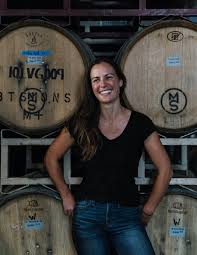
Martha Stoumen Wines is a one-woman grape growing and natural winemaking project out of Northern California that was founded upon the desire to recapture a farming and winemaking culture that has all but faded away--a winemaking culture of patience. Martha works with varieties with history in California, such as Carignan and Zinfandel, as well as those she's helping to pioneer in California’, including Nero d’Avola. Martha leases and farms 75% of her vineyards, which is becoming more and more rare in California amongst winemakers today. She focuses on biodiversity, and prunes with vine longevity in mind. She farms the vineyards in a way that maintains healthy ecosystems using traditional farming and winemaking practices.
Minimalist winemaking techniques are used in the cellar, including letting the natural yeast and bacteria on the grape skins perform the fermentation, and allowing longer macerations and aging to provide stability rather than adding tannins, acid, or stabilizing agents in the wines. Martha learned these traditional winemaking practices while apprenticing in Italy and France.
"For my wines I lease and farm around half of the vineyards myself. The other half are farmed by multi-generation farmers who understand their land, and their family's land, far better than I ever will, and who farm with my same philosophies in mind. Patience in the vineyard means composting rather than adding synthetic fertilizers, allowing predatory insects the ability to outcompete pests rather than spraying insecticides, and doing proper handwork, such as pruning for vine longevity rather than high yields." - Martha Stoumen
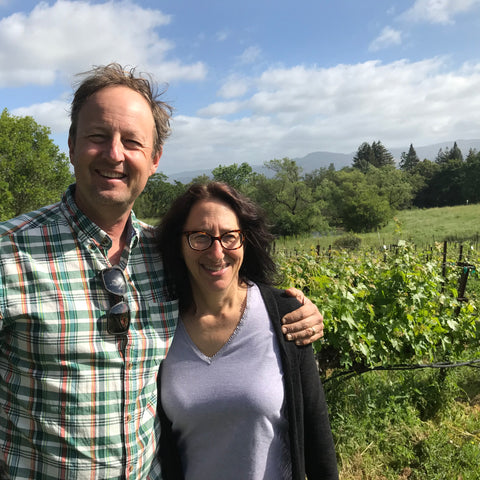
Steve Matthiasson and his wife, Jill Klein Matthiasson, have turned the common perception of the typical Napa Valley winemaking family on its head. Unlike much of the new generation of California dreamers, Steve has worked in the field for more than two decades. The Matthiassons’ wines are not only exceptional, but they are often dramatically lower in alcohol than typical wines from the area, and their entire ethos is antithetical to the exclusivity exuded by many local vintners. Both are also unapologetic environmentalists who seem on a mission to prove that growing grapes and making fine wine can be a positive force in the battle against climate change.
Since launching their brand in 2003, Steve and Jill have been evangelizing for a reversal of the past two decades' trend toward overly ripe flavors and high alcohols, and the result of their unorthodox approach has been extremely successful: Their wines are highly regarded by both customers and critics. Matthiasson has been named Winemaker of the Year by both the San Francisco Chronicle and Food and Wine Magazine, and the winery has received numerous awards.
The couple share in running the business. Jill, an orchardist, runs the business side, while Steve focuses on winemaking and vineyard operations. Beyond Matthiasson wines, Steve also has become one of Napa's top viticultural consultants, with a client list that has included Stag's Leap Wine Cellars, Araujo Estate, Spottswoode and Hall.
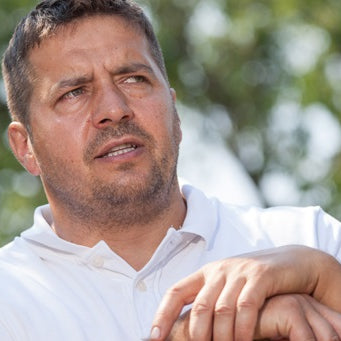
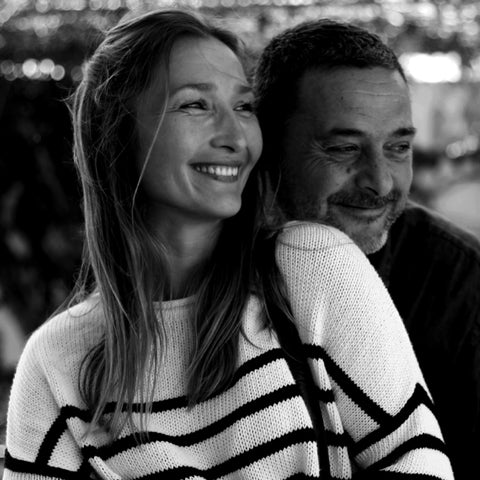
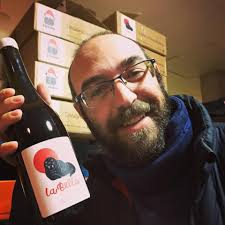
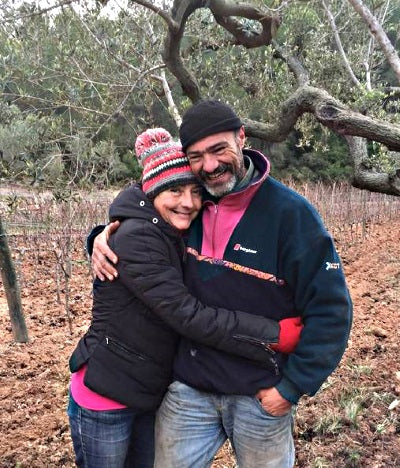
Massimo Marchiori and Antonella Gerona are an Italian couple from Piedmont. Both are architects who initially moved to Barcelona for work reasons, but around the year 2000, they moved out to the country, seeking a slower-paced lifestyle. They settled in the Massís de Bonastre (Baix Penedés), which is characterized by its clay and limestone soils. They started farming all kinds of produce and foodstuffs there, but had trouble finding local wines that were natural and authentic, so they started making their own, recovering old vines of local grape varietals.
In most cases, these vineyards were close to abandoned. Whenever they found a new vineyard, they would go to the nearby town, find out who the owner was and approach them to buy, or at least farm, the vineyard, organically. People think they’re crazy for doing this, as the vineyards are very old and low yielding, and in most cases, the grape varieties are obsolete. Some have been disqualified from D.O. for lack of color, as was the case with Sumoll, others were never even accepted. Now Massimo and Antonella are known as the crazy Italians making incredible natural wines with the grapes that all of the locals had written off in favor of more popular “international” varietals.
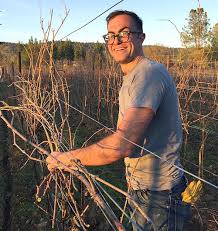
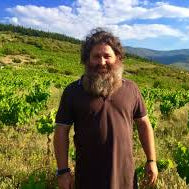
Raúl Pérez Pereira is universally considered to be one of the world’s most visionary winemakers. Since he produced his first vintage for his family’s winery in 1994 at the age 22, he has been in the forefront of the conversation about what has been called “The New Spain”. In 2005, he left his family business to strike out on his own, creating Bodegas y Viñedos Raúl Pérez, which quickly became the point of reference for the Bierzo appellation. In the intervening years, he has expanded his sphere of activity to include the appellations of Rías Baixas, Ribeira Sacra and Tierra de León, but his heart and his home remain in Valtuille de Abajo, the village in Bierzo where his family has been tending vines for well over 300 years.
Raúl Pérez takes nature very seriously. His priority is to exert the minimum influence on the grape, that’s how he understands wine. Observing every type of soil, each individual climate and the ripening times of every variety is the basis of his work, an endeavor that allows the wine to express itself without touching it, without any additives that transform it, taking the lead from the wood and leaving each vintage to modify itsel, thus achieving non-standardized wines. This method of working leaves an unmistakable stamp on his wines, ideal for drinking from the moment they are put on the market and which, after 15 or 20 years in the bottle, continue to show both character and freshness.
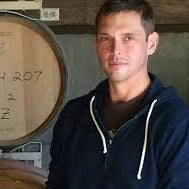
Joe Swick is a 5th generation Oregonian, born and raised in Portland. He got into the wine business working as a shipping/receiving clerk working at a specialty organic food store in Portland, where he was able to taste a lot of different wines and meet a lot of Oregonian winemakers. He worked his first harvest in 2003 in Oregon, and from then until 2012 he worked 15 different harvests, traveling all over the world as far as Tasmania, France, Portugal, and Italy.
Joe returned to Oregon in 2013 to start Swick Wines in the Willamette Valley. He works only with sustainable or organically farmed vineyards that are not irrigated, from cooler climate locations. Many of the wines have zero sulfur added, a direction Joe is excited to continue pursuing.
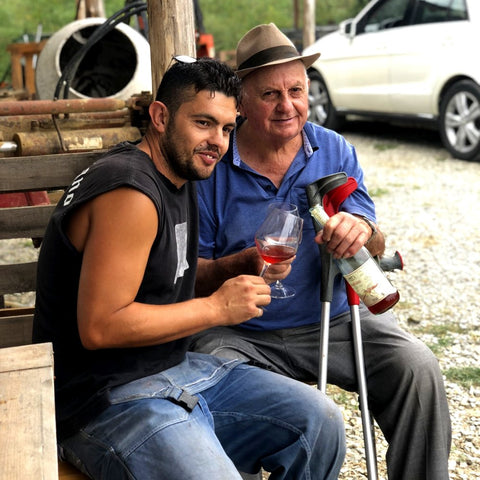
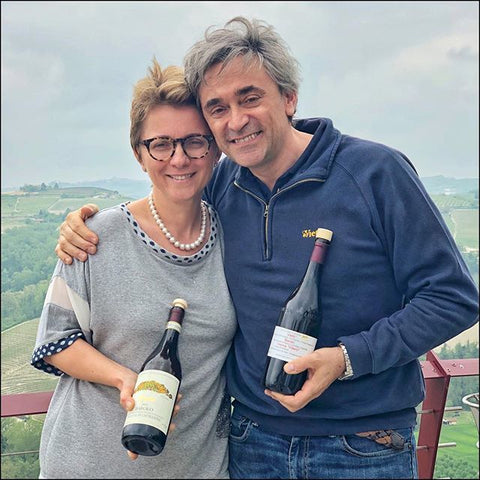
Located in the heart of the Langhe hills, at the top of the village of Castiglione Falletto, the Vietti wine cellar was founded in the late 1800's by Carlo Vietti. The estate has gradually grown over the years, and today the vineyards include some of the most highly-prized terroirs within the Barolo winegrowing area.
Although they have been making wine for four generations, the turning point came in the 1960's when Luciana Vietti married winemaker and art connoisseur Alfredo Currado, whose intuitions--from the production of one of the first Barolo crus (Rocche di Castiglione - 1961), through the single-varietal vinification of Arneis (1967) to the invention of Artist Labels (1974)--made him both symbol and architect of some of the most significant revolutions of the time.
His intellectual, professional and prospective legacy was taken up by Luca Currado Vietti (Luciana and Alfredo’s son) and his wife Elena, who have contributed to the success of the Vietti brand - universally recognized today as being one of the very finest Italian wine labels - by continuing along the path of the pursuit of quality, considered experimentation and working for expansion and consolidation internationally.